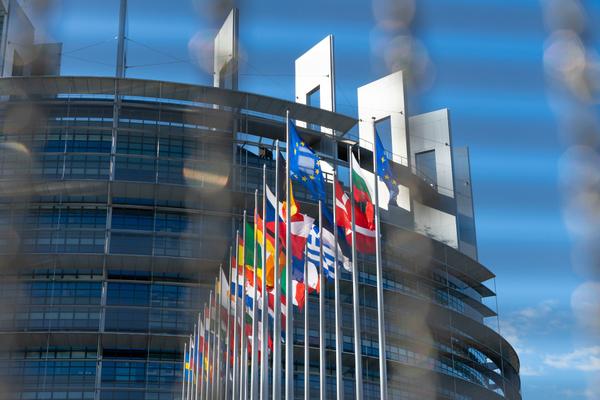Trans-governmental regulatory networks and European Union’s involvement in global governance: An occasional instrument?
In our newest article published with the Journal of European Integration, we examine if the EU is using trans-governmental regulatory networks (TRNs) as an instrument of its global governance policy.
This is a relevant question because different dynamics beyond formal participation in international organizations (IOs) have contributed in the past to the worldwide growth of EU standards and regulations. The expansion of EU regulatory frameworks to neighboring countries was a very common practice across policy sectors since the 1990s. The European Neighborhood Policy (ENP), which is an umbrella of different cooperation programs, has been one of the EU’s major support instruments for its southern or eastern neighborhoods. The externalization of EU regulatory regimes took place in neighboring non-EU countries, and also expanded to other latitudes.
Given the specific role of the EU in global governance, largely based on its soft power and promotion of standards and rules, supporting networks of regulatory agencies might be considered an adequate tool for expanding influence and reputation. Through our two-tier mixed-method methodological approach, consisting of a quantitative dataset and a qualitative comparative case study, we confirm the broad use of TRNs on the European continent in many sectors. These networks are often supported by EU institutions or through bottom-up member states NRA initiatives.
Beyond the European space, we find only sporadic TRN attempts. The use of TRNs by the EU has not been replicated in other world regions, and it has been employed just as an occasional instrument. We do not find a common EU pattern of network promotion as a governance instrument. EU institutions and member states NRAs joined already existing initiatives or collaborated to build new global TRNs which were in turn promoted by actors outside the EU. In some sectors, we observe that the Commission or EU agencies participate in some global TRNs or regional TRNs beyond Europe, providing some support, or facilitating knowledge transfer, among other initiatives that contribute to expanding and consolidating networks. However, this is not strongly ingrained, probably due to the EU's nature as an international organization that needs a special status (e.g., a noticeable exception is the case of DG SANTE’s membership which has member status in the Codex Alimentarius in food safety).
We use two case studies examining the fields of food security and energy to document different angles of this perspective. In the case of food safety, we observe a sector in which FAO and WHO largely coordinate global governance in the area, and no global TRNs have a leading role. These two IGOs have launched several TRNs focused on specific topics, the most important being Codex Alimentarius, but they remain the core global actors in the field, and EU institutions have a very limited capacity to launch new initiatives to shape global governance. Nevertheless, as markets become more integrated, the harmonization of food safety standards across the globe strengthened the Commission and EFSA’s role in this policy sector, but such positioning did not come via the promotion of TRNs, as our findings show.
In the field of energy, we find a strong involvement of the EU in the European space, be it through the strong collaboration between the EU agency ACER and the TRN CEER, or the support of the Commission for the TRN MedReg. We also find some modest involvement of the EU in TRNs beyond Europe. Contrary to food safety, in this sector, informal IGOs and TRNs dominate global governance, and they show a well-articulated configuration worldwide, that allows more options for EU involvement. For example, the EU is participating in ICER, the global network, mainly through the TRNs CEER and MedReg. Considering the global reach, the EU is present in its close neighborhood in Eastern Europe and the Mediterranean. It does also have contact with the Latin American sphere, mostly through some of its member state NRAs. While it has some outreach in Africa, there are not many options to participate in Asia, due to the design of Asian regulatory networks, which do not focus on energy questions.
Our quantitative analysis highlights the contrast between the high density of TRNs in Europe and the weak EU involvement outside Europe in promoting or supporting TRNs. The presence of long-standing IOs in some sectors, or already established global TRNs, clearly prevented the EU from leading opportunities, as we observed for the food safety sector, also to launch new TRNs. However, in the energy sector, where TRNs are more common, we observe that geographical proximity is relevant to making sense of EU efforts. Actually, the quest for networks in the European neighboring spaces contrasts with a very limited expansive global approach via TRNs. EU institutions only occasionally promoted TRNs intensively as a global regulatory governance instrument, adopting alternative instruments to support EU worldwide regulatory expansion.
Jacint Jordana is the Director of Institut Barcelona d'Estudis Internacionals (IBEI) and Professor of Political Science and Public Administration at the Universitat Pompeu Fabra (UPF)
Adam Holesch is Project Manager of the GLOBE Project and Research Fellow at Institut Barcelona d'Estudis Internacionals (IBEI).
Juan Carlos Triviño-Salazar is a Postdoctoral Researcher Juan de la Cierva-Formación at Institut Barcelona d'Estudis Internacionals (IBEI).
